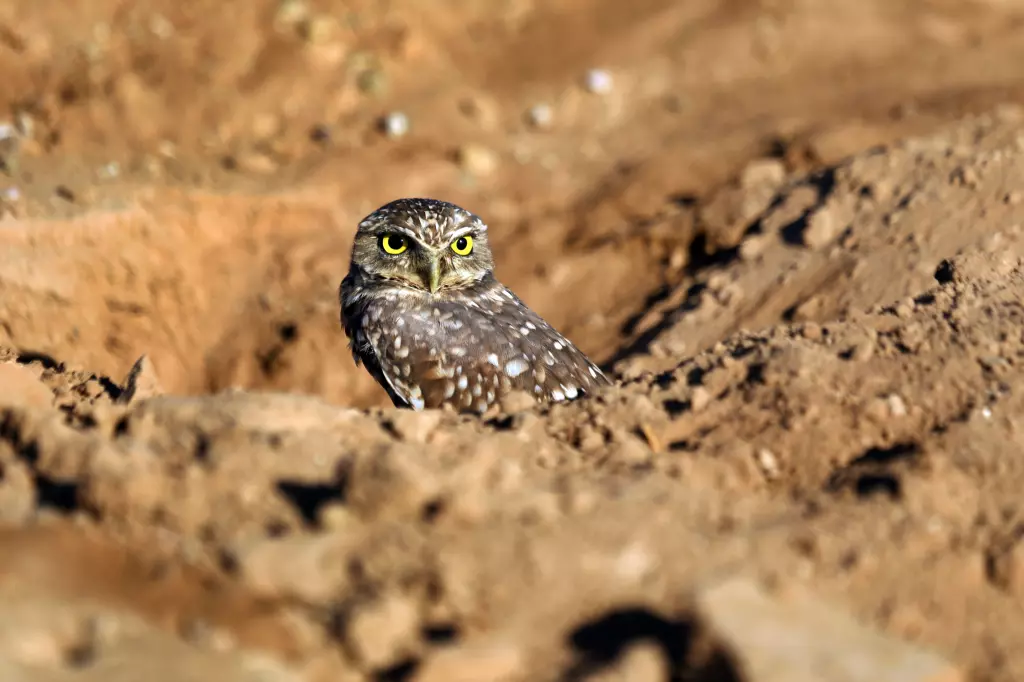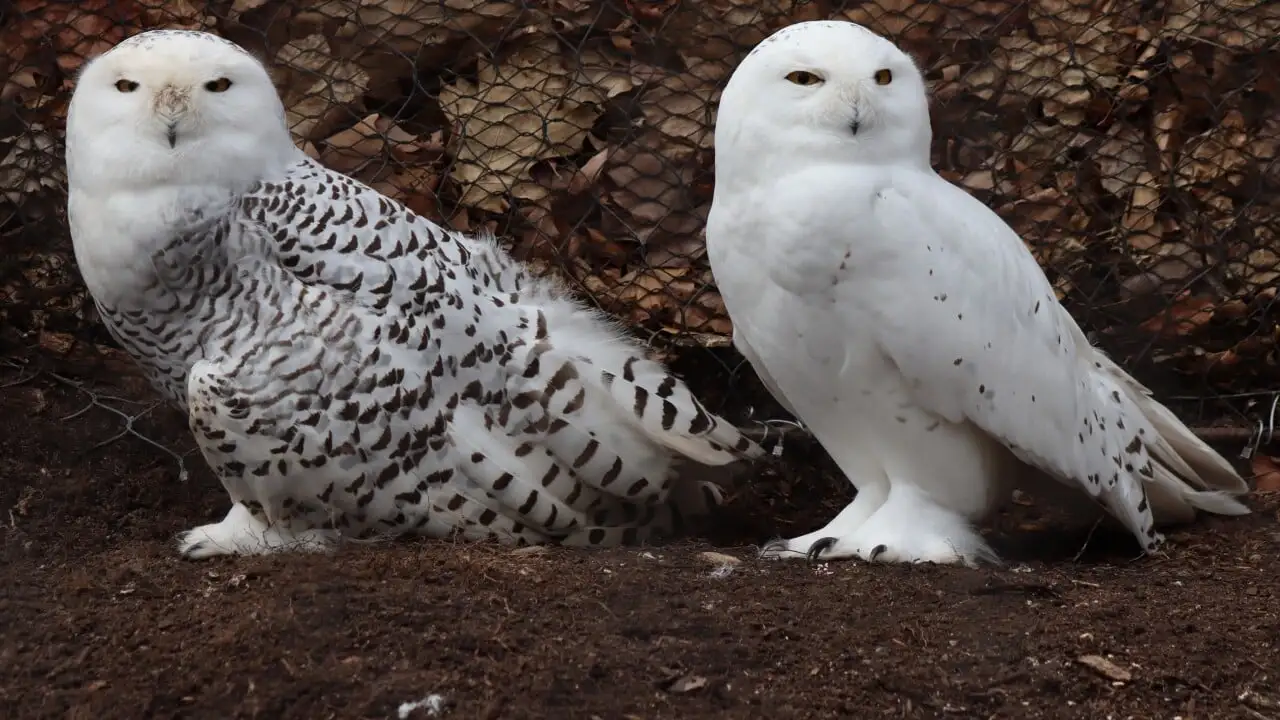From LA Times
Lila Seidman, Oct. 14, 2024
California wildlife policymakers have opted to protect the diminutive Western burrowing owl as they consider listing the rapidly declining species as endangered or threatened.
The state Fish and Game Commission unanimously voted last week to make the unique avian a candidate for permanent safeguards under state law while acknowledging the perspectives of stakeholders from industries that could be affected by the decision.
Conservationists point to development, agriculture and clean energy projects as contributing to the owls’ decline by snatching habitat. Some industry representatives pushed back on the claims and underscored the importance of their role in the state.
“I think economics versus conservation is a false choice,” commission President Samantha Murray said during the Thursday meeting. “In California, we have the fifth-biggest economy in the world. We can have solar and housing and food and burrowing owls.”
The commission rejected a similar bid for protections roughly 20 years ago, and since then the situation has become more dire for the bird — the only owl species to nest and roost in underground burrows. Proponents of exploring the listing of the owls under the California Endangered Species Act said existing regulations and management strategies haven’t worked.
In 2003, when a petition to consider listing the species was denied, there were no more than 10,500 breeding pairs, according to the California Department of Fish and Wildlife. As of last year, there were, at most, 6,500 pairs.
It’s believed the owl with bright yellow eyes has been extirpated from 16% of its range in parts of the coast and Central Valley. It has been nearly wiped out in 13% of its range, also in those regions. In the Bay Area, the owl is barely hanging on.
“At long last there’s a glimmer of hope for California’s rapidly disappearing burrowing owls, who desperately need protection,” said Jeff Miller, a senior conservation advocate at the Center for Biological Diversity, in a statement.
In March, the center, along with the Defenders of Wildlife, the Burrowing Owl Preservation Society, the Santa Clara Valley Audubon Society, the Urban Bird Foundation, the Central Valley Bird Club and the San Bernardino Valley Audubon Society, filed a petition with the commission seeking endangered or threatened status for burrowing owl populations. Miller penned both the 2003 and 2024 petitions.
Miller describes the owls as “eggs on legs” because the animal’s round head and body sit atop long, skinny legs. They stand just 7 to 10 inches tall and, as their name suggests, nest underground. “They can seem kind of goofy,” Miller told The Times earlier this year.
The owls inhabit grasslands, shrublands and deserts, as well as “human-altered landscapes,” including agricultural lands, golf courses and cattle pastures, the California Department of Fish and Wildlife’s Anne Hilborn told the commission. “The things that they really need are burrows and short vegetation,” with the burrows primarily appropriated from ground squirrels, she said.
Sprawl development and control efforts targeting ground squirrels have pushed the owls out of the areas they dwell in, while renewable-energy projects and some types of agriculture also have infringed on their digs, according to conservationists.
The burrowing owl is a California species of special concern, a U.S. Fish and Wildlife Service bird of conservation concern, and has protections under the Migratory Bird Treaty Act. It is not listed under the federal Endangered Species Act.
“Burrowing owls cannot wait any longer,” Miller told the commission. “And I’ll just say, personally, I love this species. And I’d like to see them around for future generations throughout the state.”
As California farms use less Colorado River water, worries grow over shrinking Salton Sea Oct. 13, 2024
Home building, agriculture and solar and wind energy industry representatives rejected some assertions made by the petitioners while underscoring their contributions to top state goals, such as moving away from fossil fuels and increasing housing.
Shannon Eddy, executive director of the Large-Scale Solar Assn., who supported exploring listing the owls, said the petitioners made unsubstantiated claims about the effect of solar projects on the species.
Eddy said solar projects had protected the owls’ grasslands and that they’d been known to return to solar energy development sites once construction was completed.
“We are a country divided, and we need to stand against false rhetoric,” she said during public comment, “and we need to dispel the kind of specious assertions like these that turn regulators and the public against one of our best tools to address the climate crisis.”
Clark Morrison, a natural resources attorney representing the California Building Industry Assn., said the industry “does find itself facing great challenges because of the pace of listings and other regulatory changes in the state.”
“These do have an impact on the provision of housing,” he told the commission. “They slow projects down. In many cases, the projects are abandoned because the regulatory challenges can’t be met.”
Miller, however, argued that the development threatening the owls is urban sprawl, often characterized by low-density housing — not areas where affordable housing is built.
Wildlife officials said they do not see elevating the owl to candidate status as undercutting other priorities.
“I appreciate how important all of those dimensions of what’s happening in the state are and also how urgent the situation is for the owl,” commission Vice President Erika Zavaleta said.
The owl, now a candidate to be listed under the state Endangered Species Act, will enjoy the same protections as if it was listed while a 12- to 18-month status review moves forward.
“After decades of effort to safeguard declining burrowing owl populations in California, the species has finally been afforded interim state protections where they’re most needed — at least for the time being,” said Pamela Flick, California program director with Defenders of Wildlife, in a statement.
Once the review is complete, the Fish and Game Commission will decide whether to deem the owls — statewide or certain populations — threatened or endangered under state law.

